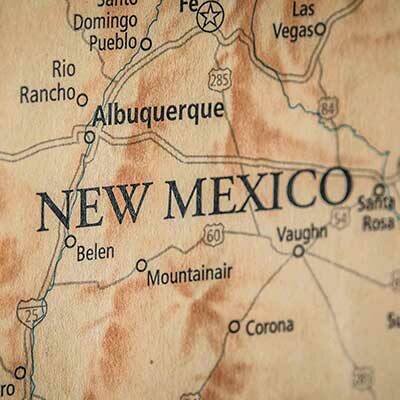As states try to regulate PFAS, disputes increase between military, companies
Laura Paskus
November 17, 2020
In New Hampshire, the Air Force has refused requests from state officials and members of Congress to follow the state’s regulations limiting the amount of PFAS, or per- and polyfluoroalkyl substances, in drinking water.
Because the U.S. Environmental Protection Agency has failed to set drinking water regulations for PFAS, many states have started creating and trying to enforce those limits.
But as New Hampshire Public Radio reports:
New Hampshire wants the Air Force to cover the cost of drinking water assistance for three homes near the former Pease Air Base with PFAS chemical contamination in their home wells.
It's the latest escalation in a dispute over whether the Air Force has to follow New Hampshire's new limits on PFAS in drinking water as part of ongoing groundwater cleanup around Pease.
The Journal News Independent reports that Mansfield, Massachusetts voters just approved $13.9 million in water projects, including two to address PFAS levels in the town’s drinking water system. According to the story:
Two of Mansfield’s nine wells, Cate Springs and Walsh, tested above the state’s recommended levels of 20 parts per trillion (ppt) for PFAS since April. In both instances, the town took the wells offline, which meant a loss of 1.2 million gallons of water per day.
In Michigan, residents are finding out that their wells have tested positive for PFAS at levels above recommended limits.
At The Intercept, Sharon Lerner reports that the Biden Transition Team has appointed Michael McCabe to its agency review team at the U.S. Environmental Protection Agency. McCabe, Lerner reports, led DuPont’s defense of PFAS:
McCabe began managing DuPont’s communications with the EPA about the toxic chemical in 2003, two years after he left his job as deputy administrator of the agency, and continued in that role until at least 2006. As The Intercept previously reported, his still-fresh relationships with his former colleagues in government came in handy as McCabe skillfully and successfully helped the giant corporation dodge the agency’s efforts to set binding limits on the chemical.
To read more about how companies like DuPont used—and defended their use of—PFAS check out our timeline.
New Jersey is battling the chemical company Solvay Specialty Polymers over critical information about a recently identified group of PFAS compounds. The company has provided the New Jersey Department of Environmental Protection with studies showing that the chemicals, which it has released near its plant in West Deptford, are toxic. But Solvay has forbidden the state agency from sharing the details of the chemicals’ effects on health and the environment on the grounds that they are confidential business information.
Meanwhile, in Maryland, a spill of aqueous film-forming foam ran from a storm drain into the Bear Branch, killing hundreds of fish. In the Capital Gazette, Rachael Pacella reports:
A vendor testing equipment at the Anne Arundel County Fire Training Academy in Millersville in September unintentionally released aqueous film-forming foam into a storm drain, which flowed into Bear Branch, blanketing the water.
About 100 dead black-nosed dace, possibly suffocated by the foam covering the water’s surface, were found after the Sept. 24 incident, Maryland Department of Environment spokesperson Jay Apperson said.
In California, a woman brought a class action lawsuit against Thinx Inc., alleging that the company’s absorbent underwear contains unsafe levels of PFAS. Bloomberg Law has that story. And you can check out this story from September from E&E News’ Ariel Wittenberg about the toxic threat “lurking” in menstrual products.
We know it’s tough to read about all these different cases of contamination and cleanup. But even with so much happening in the world right now, paying attention to PFAS is critical. That’s why we made a short video on our site, Groundwater War: New Mexico’s Toxic Threat, about why to care about PFAS.
If you’ve been affected by PFAS contamination in your community here in New Mexico, call our tip line at (505) 433-7242. To read more coverage of PFAS in New Mexico visit “Groundwater War: New Mexico’s Toxic Threat,” which includes a timeline of events and studies on PFAS.






